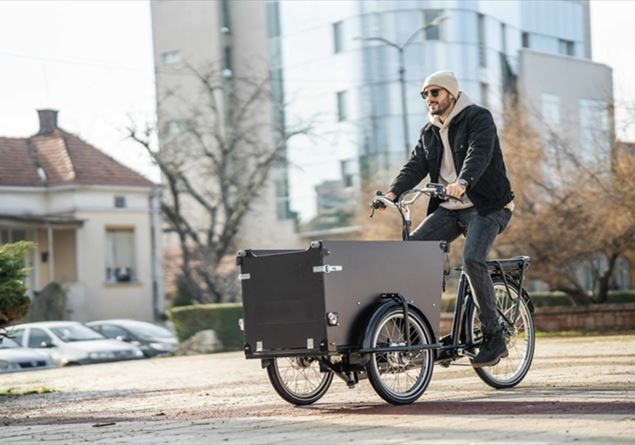You can see them parked out of the schools, downloaded after carrying very young passengers, or on the streets while inceting charges and stable, full of packages over delivery. The cargo bikes in Italy are few, better very few, yet they do not go unnoticed. It will be for the cassone, a sort of forerunner in traffic, it will be for that “countercurrent” air that some makes the nose turn up to some: too wide and too expensive, they say. Still, these “extra bicycles” – 2 and a half meters in length for one of width – could start the sustainable revolution of urban mobilityas already happened in several cities in Northern Europe. An example above all, Copenhagen, where one family with children uses cargo bikes for daily mobility. In Italy to use the bike for daily travel is one in ten citizens, the majority (70%) prefers the car. “In the urban field, cargo have great potential, they are ideal for short -range movements, within five kilometers, just those that are covered at 60% in our country in the car», He says Claudio Magliuolodirector of the Clean Cities Italia campaign for the Cargo Revolution, which also promotes Cargo Bike Day, on March 30 in Milan with a cargo bike parade through the streets of the city and the Cargo Bike Village, stands and test circuits in the central Sempione park. “It is the natural evolution of going by bike, its 360 degree extension: very useful when it is necessary to transport objects and people », he also says Luca PolveriniNational Councilor of the Italian Federation of Environment and Bicycle (FIAB).
In addition to family mobility, Fiab underlines the positive impact that cargo bikes could have in the logistics of the last milewhich tests the Italian cities with delicate historic center and from the Arduo parking especially for vans and trucks. The many vans used for deliveries of the online sector are also congesting the cities. «In Milan, just to give an example, 180 thousand operations per day are detected. The cargo are twice more efficient and rapid of the vans, they cost a tenth for delivery units and hit emissions. On the contrary, always in the Lombard capital commercial vehicles are less than 10% of the overall fleet but are responsible for more than half of the air pollution, “says Magliulo.
In practice, the advantages of cargo bikes are being able to manage the transport of children, backpacks and folders, animals, musical instruments, as well as shopping bags and loads of any kind. To lead them, no particular skills are needed if not to become familiar with the size and weight (the pedal assisted vehicles can also reach 30 kilometers per hour, with advanced systems guarantee safe and timely braking). «In the city, the predominance of cars causes conflicts while The use of cargo bikes would make the use of spaces more democratic, also increasing the level of social connections», Adds the director of Clean Cities Italia.
Of course, they recognize experts in the sector, the purchase costs are not indifferent: between 3 and 5 thousand euros for muscle vehicles, while for those with pedal assisted the prices rise further. “However, the purchase and annual maintenance do not have costs comparable to those of motor vehiclesjust a few years to amortize the shopping », note Polverini. “The incentives would be precious – says Magliulo – would then have a network of suitable cycle infrastructures, wider and without marked deviations, as well as the possibility of proceeding with Cargo Sharing or rent of the means, such as in Paris”. The road, for the cargo bikes, is long but not impossible: even the revolution of sustainable mobility can start with a simple – and decisive – collective thrust on the pedals.











